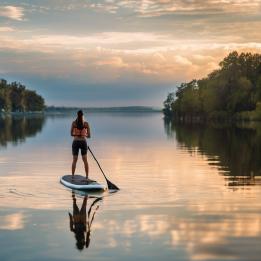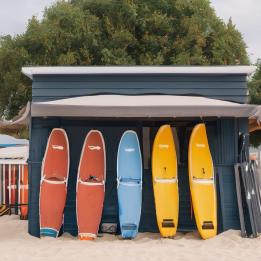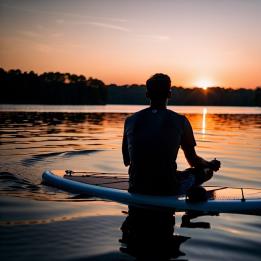SUP for Non-Swimmers: A Guide to Safe Stand-Up Paddleboarding
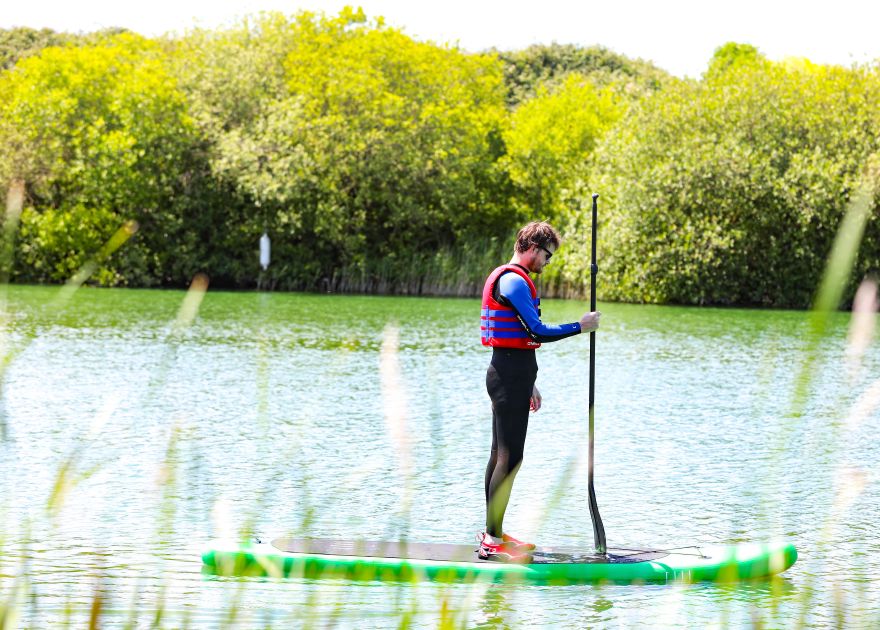
Paddling With Caution: A Beginner’s Guide to Stand Up Paddleboarding as a Non-Swimmer
As a non-swimmer interested in trying stand up paddleboarding (SUP), I know there can be concerns around safety. But I’m here to tell you that with the right precautions, SUP for non-swimmers can absolutely be done! If you’ve seen paddleboarders gracefully gliding across the water and wished you could join in the fun, this post covers everything you need to know to get started.
If you’re interested in learning more about why SUP is so great, see our introductory post.
The Debate: Can Non-Swimmers Really SUP Safely?
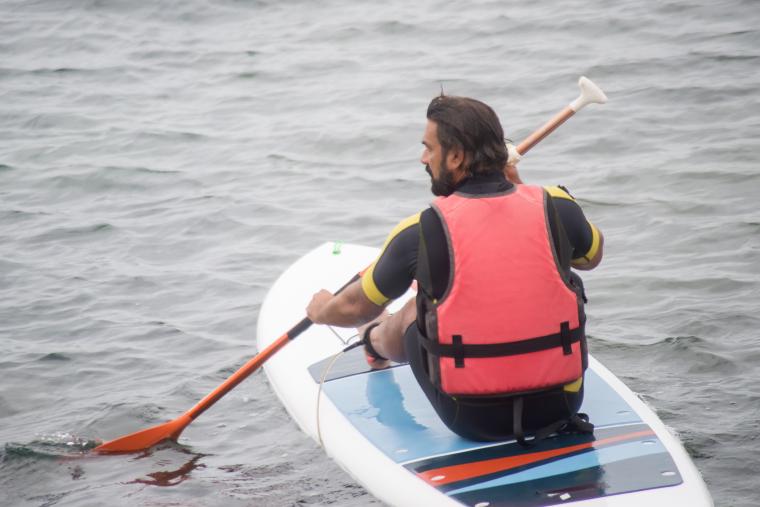
The SUP community has mixed opinions on whether non-swimmers should paddleboard. Some argue swimming is a prerequisite for safety. They caution that accidents can happen, and you may need to rescue yourself.
Others believe that with life jackets, sticking to shallow water, and never going alone, non-swimmers can enjoy SUP too. I fall into the latter camp from personal experience as a newbie paddler. While swimming skills are great to have, a lack of them doesn’t have to hold you back.
Top Safety Tips for Non-Swimmer Paddleboarders
The number one rule is always wear a properly fitted life jacket or personal flotation device (PFD). This will keep you afloat if you fall off your board. Never consider going without one.
Paddle near the shore. Staying close to land provides a sense of security if you need to stop and rest or get back to dry land quickly. Avoid venturing into open water until your skills improve.
Bring a buddy. Having someone experienced alongside you is ideal so they can assist if needed. Solo paddling is risky for beginners.
Know conditions. Check the weather forecast and avoid high winds or storms. Understand currents in the area. Pick ideal conditions to start.
Use a leash. Attach your ankle to the board so it doesn’t float away if you fall. Scrambling to catch a loose board can cause panic.
practise self-rescue. Learn techniques like climbing back on the board from the water so you stay calm in case of a fall.
Build your comfort on the water gradually – don’t bite off more than you can chew as a beginner. And of course, take swimming lessons to improve safety over time. But for now, responsible precautions means SUP can be for non-swimmers too!
Picking Your Paddle Playground
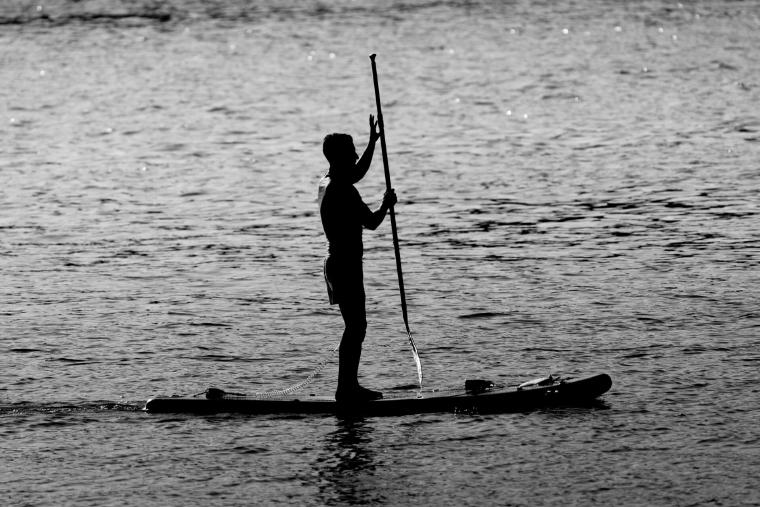
As a new paddleboarder, carefully choose your location based on your skills. Small lakes, ponds, and protected bays are ideal for beginners. Avoid large lakes or oceans where wind and waves can get strong.
Check the wind forecast before heading out. Paddling into the wind on your way out gives you an easier return trip back. Gusty winds can make paddling very challenging, especially for newer paddlers.
Scout for potential hazards like boat traffic, swimmers, or underwater objects. Over time you’ll learn to “read” the water to predict conditions. But for now, choose the calmest, clearest water possible.
Stick to areas you know well. Familiar depths, tides, currents, and potential obstacles will give you added peace of mind as a non-swimmer. New waters bring new risks until your skills improve.
Why a Leash is Non-Negotiable for Non-Swimmer SUP
A basic leash connects your ankle to the board so you stay together. But it’s often ignored by pro paddleboarders. As a beginner, a leash could literally be a lifesaver if you fall off in deep water.
Without it, a stray board floated out of reach can leave you struggling. Panic leads to exhaustion. A leash also allows you to rest while holding onto the board without worrying about separation.
There are basic coiled leashes, or premium options with swivels and quick-releases. But any leash is better than none for non-swimmer safety. Don’t let overconfidence make you neglect this essential piece of gear.
Learning Self-Rescue Skills
Falling off your paddleboard is inevitable as a beginner. So learning to calmly reboard from the water is crucial. Take time to practise techniques on a nice day close to shore.
Some tips:
- Don’t panic! Staying calm is key.
- Make sure the board doesn’t drift away on wind or current.
- Approach from the tail end and push down to raise the nose up.
- Roll onto your belly and wiggle your body onto the board.
- Put your chest on centre of the board and kick your legs to rotate up.
Regular practise of self-rescue techniques can significantly boost your confidence on the water.
Having self-rescue skills will prevent fear if you fall paddling alone. Staying relaxed helps conserve energy if you need to swim.
Home Waters Advantage
When first starting out, stick to paddling from a beach or boat launch that you’re very familiar with. Having your home turf advantage means knowing the unique quirks of that waterway.
You’ll already know about potential hazards like sudden drop-offs, rocky areas, tidal changes, wind patterns, and other dynamics. Unfamiliar waters bring more variables and uncertainty.
Starting in your home waters helps build foundational paddling skills, balance, and comfort on the board. Once you have the basics down, then you can start exploring new spots with added confidence.
Take it slow and be methodical about how you progress. Gaining skills in manageable increments is the key to safety.
Improving Swimming Skills for SUP Safety
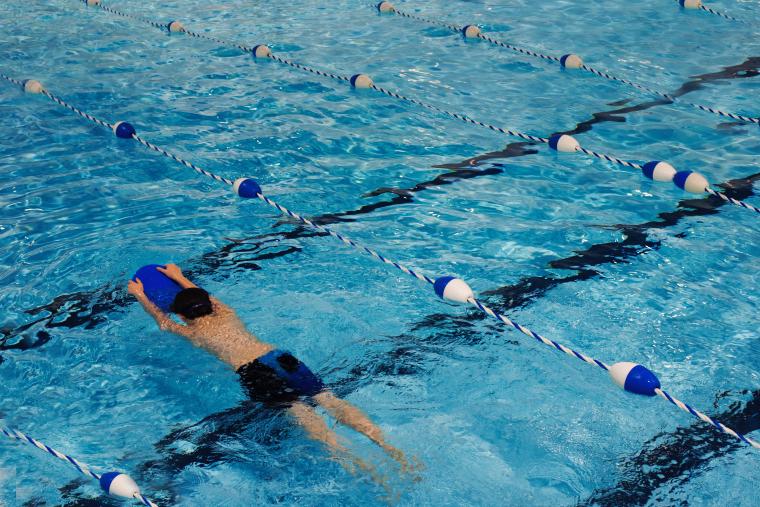
While you can SUP as a non-swimmer with the proper precautions, improving your swimming abilities should be part of your long term plan. Taking adult swimming lessons can be life changing.
Even attaining basic proficiency increases your sense of control in the water. This directly transfers to feeling safer while paddleboarding. Plus it opens up more possibilities to expand where and when you can SUP.
Understanding your personal relationship with the water is very individual. Be patient as you push your comfort zone and acknowledge the mental aspects like fear or uncertainty that may surface.
Learning swimming and water safety skills simultaneously will serve you extremely well for SUP and any other watersports. Let your increasing capability boost your confidence and independence on the board.
Paddle On, Non-Swimmers!
SUP for non-swimmers is absolutely achievable. With some smart planning, the right gear, and sensible precautions, you can start paddleboarding even without strong swimming skills.
Just take it slowly, put safety first, and don’t overestimate your abilities too quickly. Build your comfort on the water gradually. And do invest in improving your aquatic skills over time.
Patience and prudence will pay off – you’ll be paddleboarding safely and happily in no time! Be sure to review our comprehensive safety checklist for non-swimmer’s SUP before heading out on the water. Let me know how your first SUP sessions go as a beginner non-swimmer. Enjoy the serenity and fun of the water!

